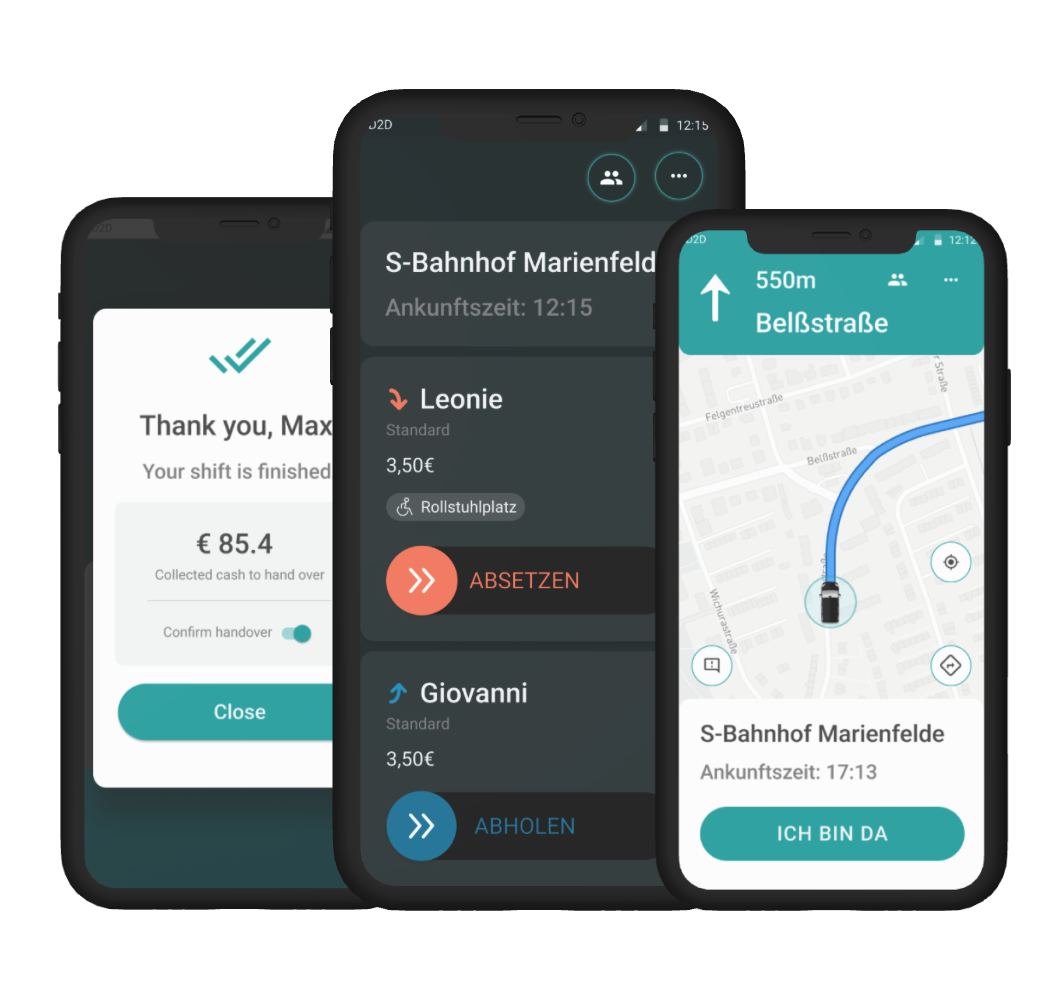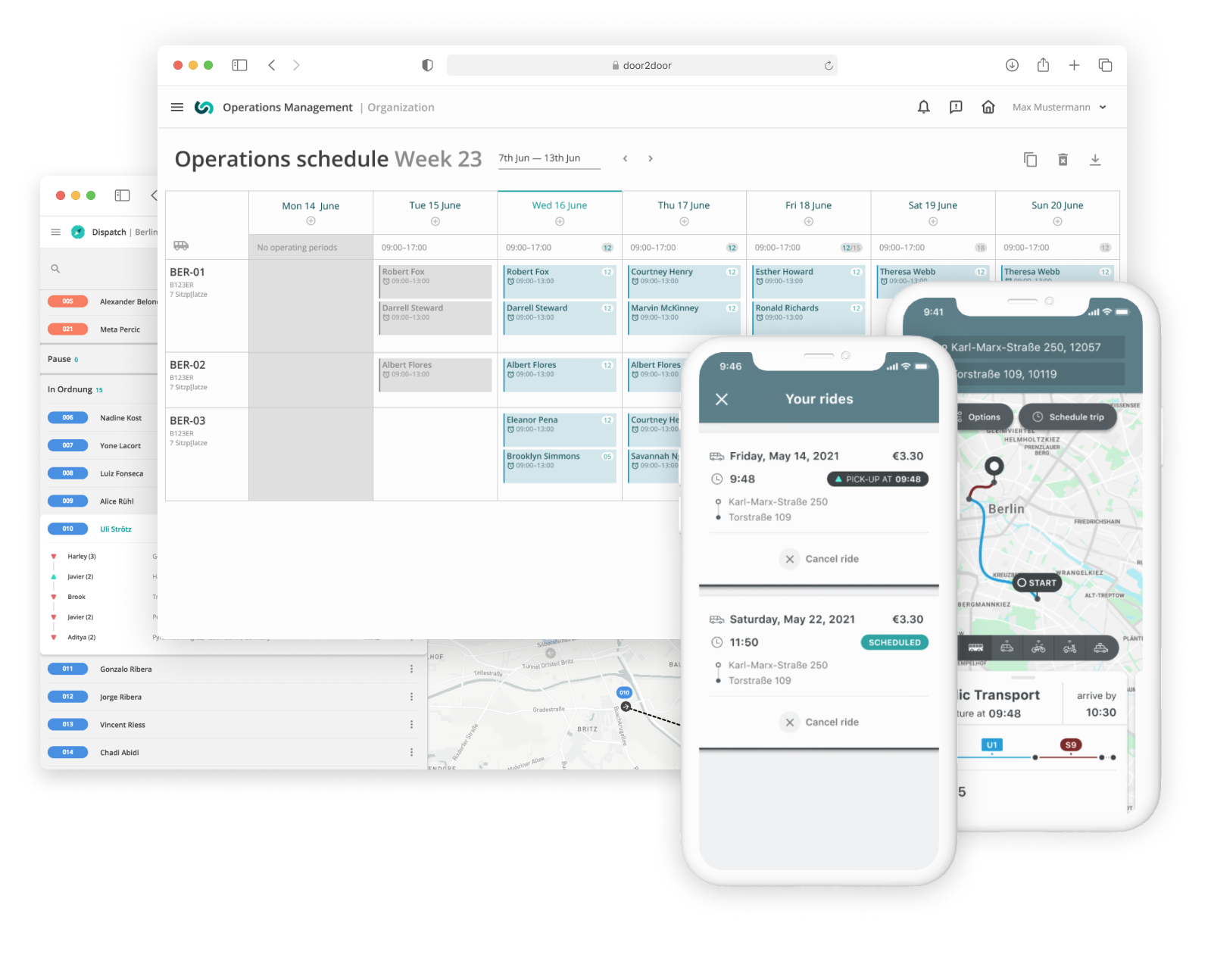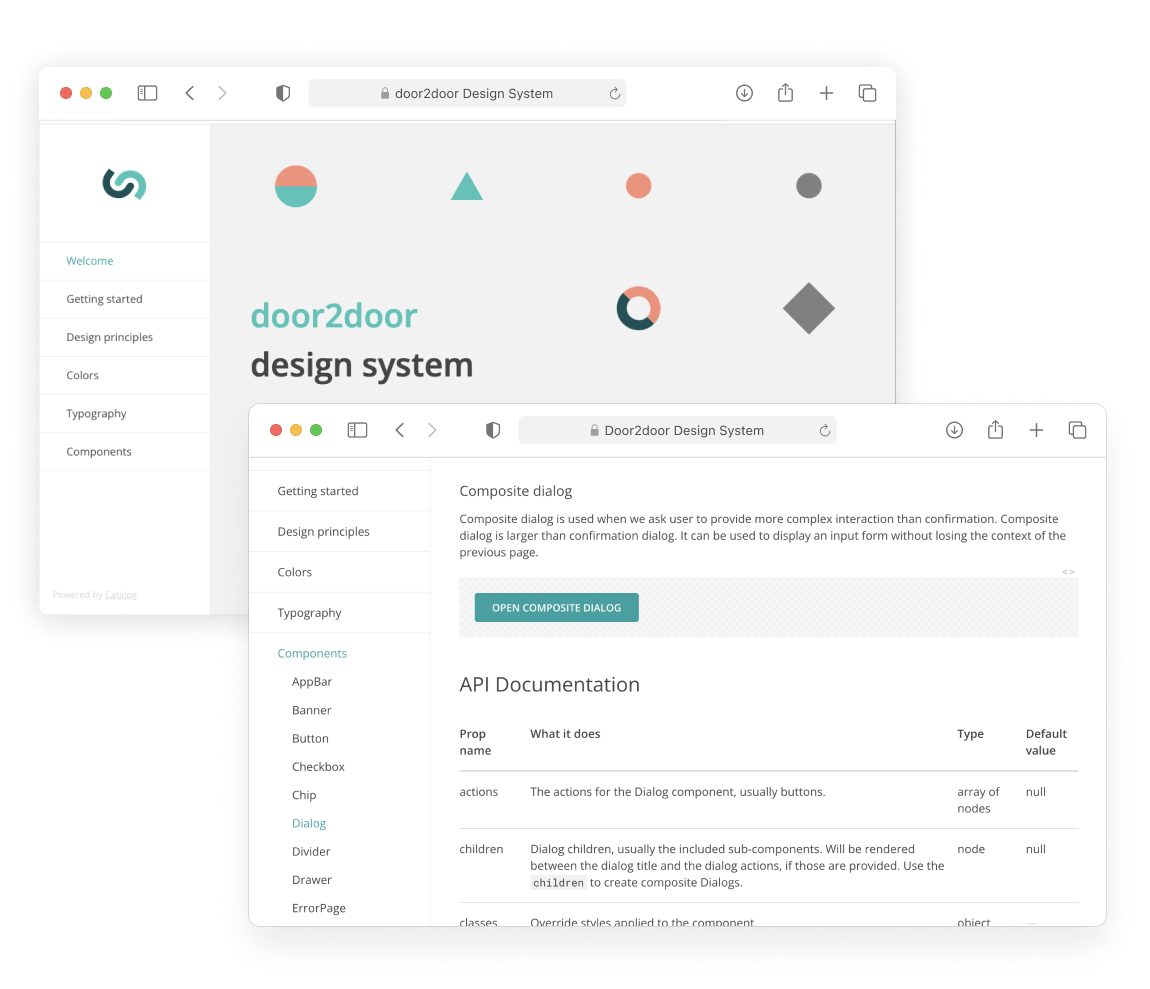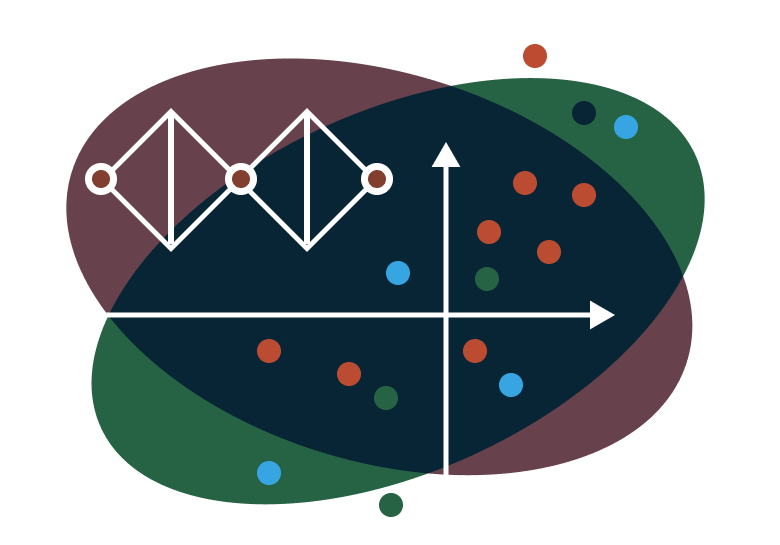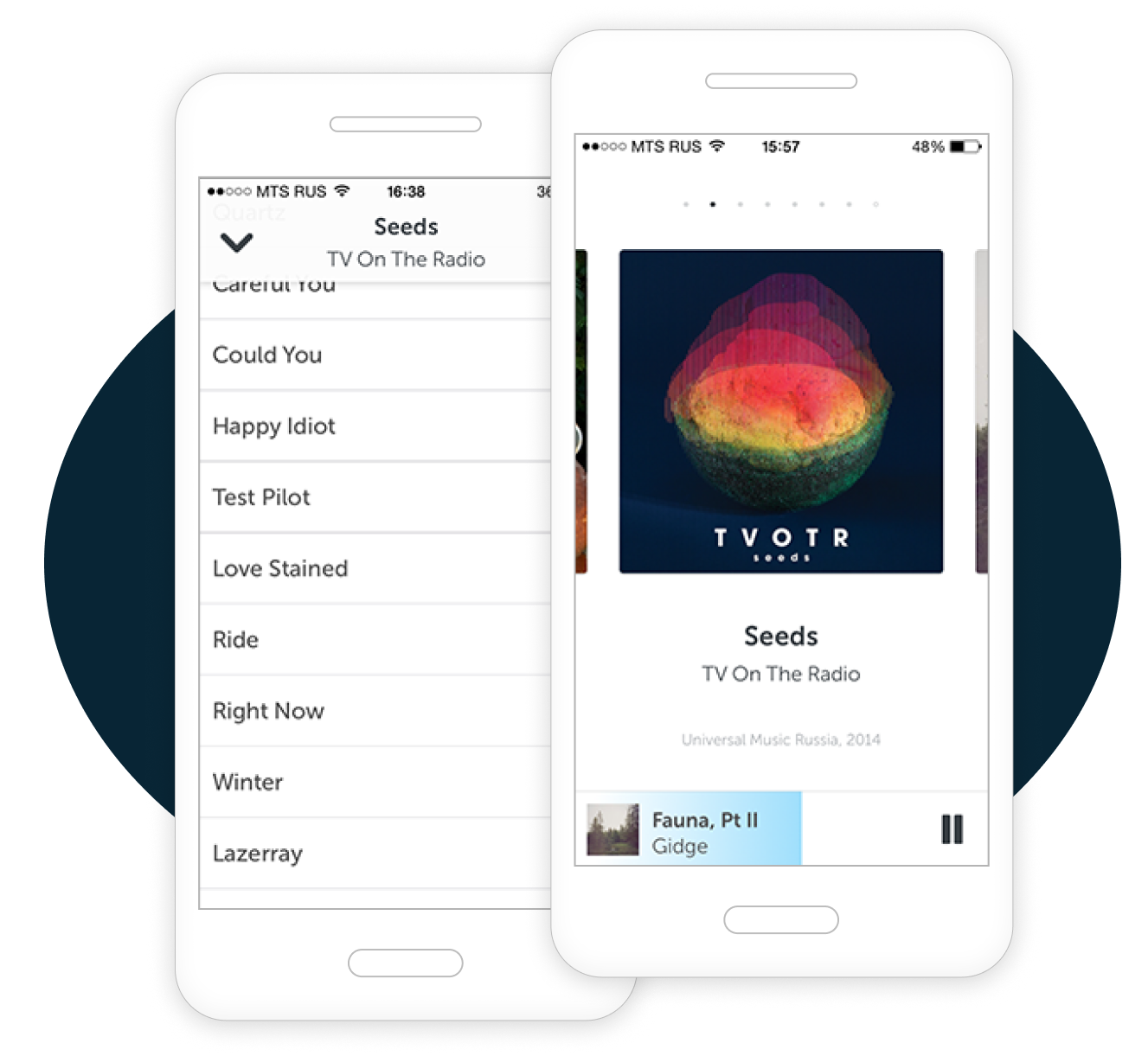Creating a web interface for music discovery and sharing
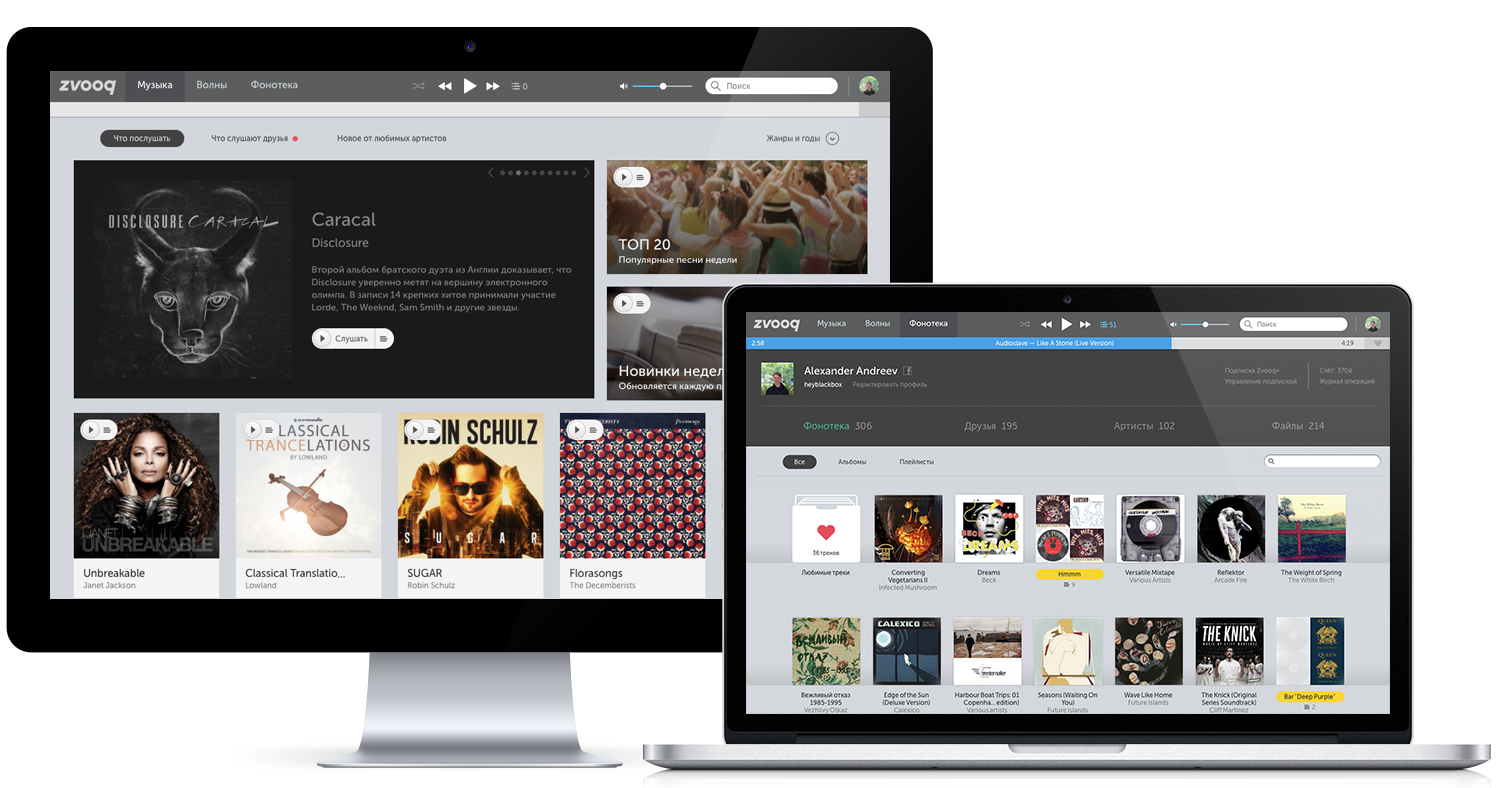

In the past two decades, P2P services such as Napster, Soulseek and Bitorrent made music accessible more than ever since the birth of a record industry. At the same time, ubiquity of music dissolved and weakened its meaning and value. Carefully designed vilyl records and CDs got replaced by folders of poorly tagged mp3 files. Music was available, but some important part of music culture wasn't there anymore.
Solving this problem was the goal of Zvooq: to recreate and facilitate a culture of a personal relationship with music.
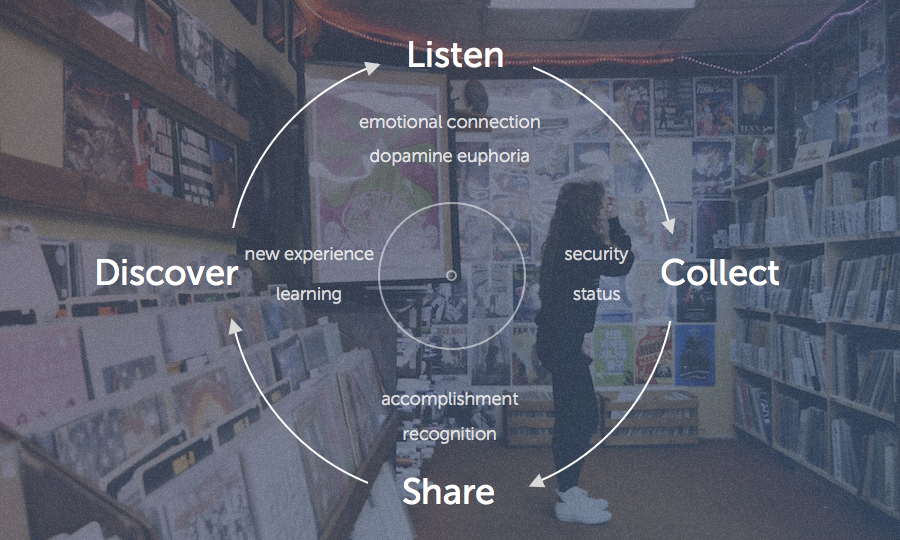
We articulated four basic types of interaction between a user and a music object: discovery, listening, bookmarking and sharing. As the album travels from being discovered into the user's collection, and then into friends' collections through sharing, it is getting more valueable. A service was designed to keep this value and pass it on further.
Designing discovery UI, we were trying to put user in a "flow state" similar to the one possible browsing through records in a physical store: being surrounded by music. It is possible to navigate between marked shelves, quickly flip through records. Pick a record to "zoom in", look at cover art, read the details, feel the paper of the envelope. Instantly listen.
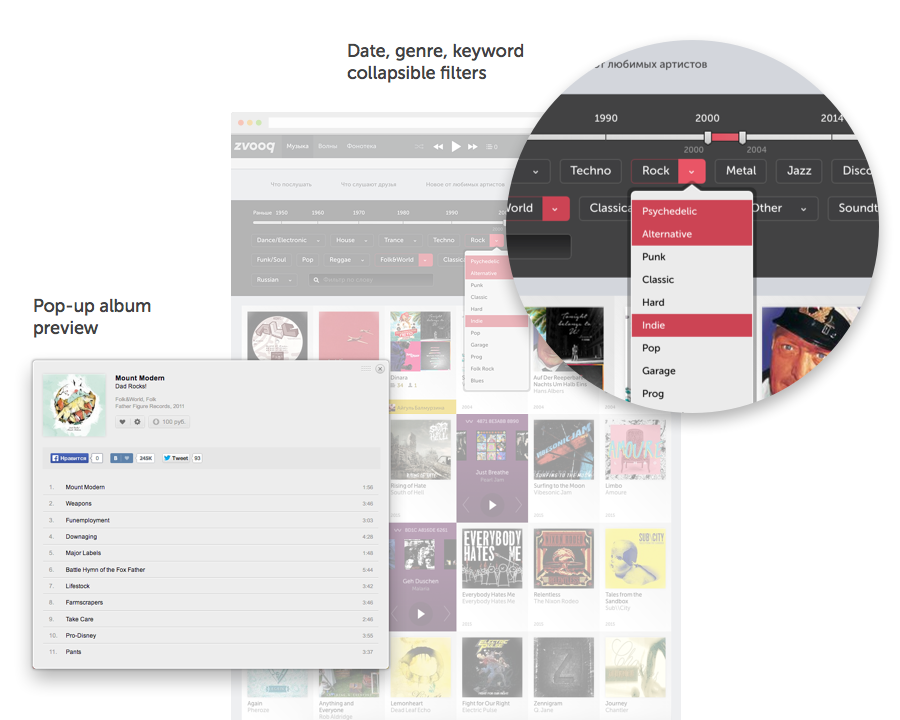
The actions of adding to library and "liking/sharing" were merged together. There was no explicit action for sharing the album to all friends without adding it to a personal collection. This way we softly pushed users to collect and share only valuable music, keeping the noise away.
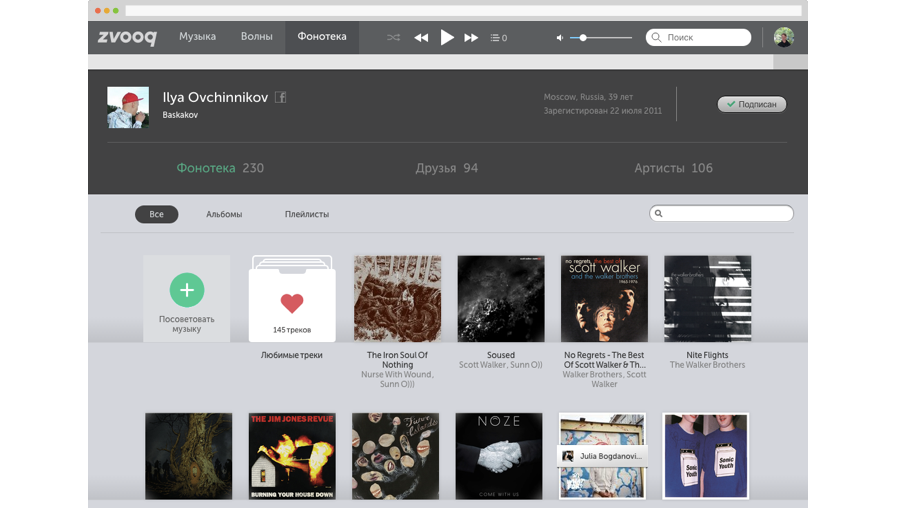
User's collection was designed to be a personal hall of fame, showcasing a person's taste. At the same time, any album could be instantly sent to a friend's collection, where a recipient could either accept or reject the recommendation.
